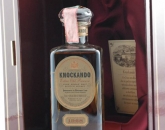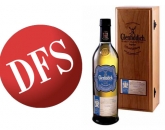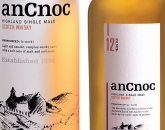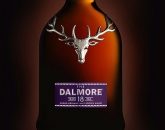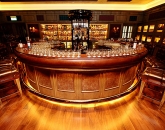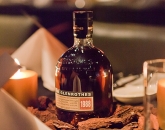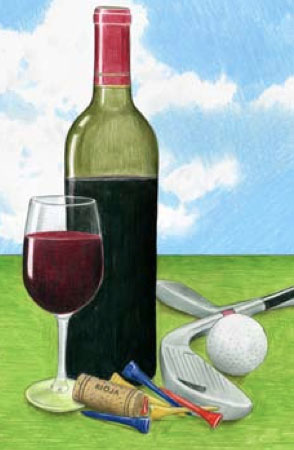 In late September 2008, against a backdrop of global financial markets staggering ever closer to calamity, six bottles of Chateau Lafite 1982 were listed at a prominent Paris auction. Lehman Brothers had just disappeared after 158 years of successful operations, taking with it the investment parameters we had all come to trust inherently. The foundations of our understanding of the global financial markets and their players were being shaken to the core. Fear had replaced greed as the primary instinct.
In late September 2008, against a backdrop of global financial markets staggering ever closer to calamity, six bottles of Chateau Lafite 1982 were listed at a prominent Paris auction. Lehman Brothers had just disappeared after 158 years of successful operations, taking with it the investment parameters we had all come to trust inherently. The foundations of our understanding of the global financial markets and their players were being shaken to the core. Fear had replaced greed as the primary instinct.
Notwithstanding this, only a few days earlier a London auction of a variety of Hirst pickled animal carcasses had elicited prices normally reserved for the services of David Beckham (or the price of an Icelandic bank or two). This despite predictions that the brooding gloom would depress interest in the art market. Not yet apparently.
Thus it was with much anticipation and interest that the 6 bottles were paraded before the crowded room and the online bidders. They were ex- Chateau, so provenance was impeccable. Wines of lesser pedigree are often ubiquitously described as “from the collection of a gentleman collector”, a term used quite liberally in auction parlance where provenance is known but not necessarily verified.
As the bids for the prized bottles approached the previous record, the excited buzz in the room turned to a hushed, nervous silence. Hands that had previously been raised with proud Gallic defiance and courage were firmly clenched in reluctant, defeated laps, some pinned there by the piercing glower of fuming spouses who could never understand why their husbands were so obsessed with accumulating more wine than they could ever possibly consume.
Then the brokers manning the phones stood up and took over the show. The crowd was treated to a superb match of phone tennis as the combatants slugged it out for the trophy:
1600 Euro, 1700, 1750, 1800, 1850, 1900, 1910, 1920, 1930, 1940, 1941, 1942, 1943...and finally, 1944 Euro. Sold.
A new record! Crisis?! What crisis?
The stunned room erupted into rapturous applause. (I have always been baffled why auction purchases elicit applause. Is it really an outpouring of appreciation and goodwill as some have explained to me? If there are any psychologists out there, please elaborate.)
The excited chatter afterwards revealed that “deux amateurs Chinois” had provided the bidding spectacle. Some scoffed and called it a rash burst of testosterone driven
folly. Others winced as they remorsefully contemplated that the baton of wealth creation had moved all too demonstratively from West to East. Jubilant brokers of wine funds , extrapolating that the sale would re-price all investment wines, were frantically relaying the news back to their clients, offering compliments on their purchasing wisdom and exhorting them to commit funds to the 2007 offerings that had so far been ignored.
So, what are we to surmise from this? Should we conclude that every asset class is in brutal decline but that art and wine are not? I doubt it, despite all the evidence to the contrary. Art is its own peculiar theatre where investors seem to hope that the creator dies before becoming too prolific. Frankly, I find it all too strange and a bit silly.
Regarding wine, the audience is much larger and the supply/demand dynamics easier to understand. However, whilst wine prices can defy gravity for a while, I do not believe they can sustain their spectacular performance. I am also particularly sceptical of the process used to price portfolios because the market is neither transparent nor particularly efficient. Why am I of this opinion? Mainly due to the fact that at the same time as records were being set in Paris, my own business had two bottles of impeccably cellared 1982 Lafite being auctioned in Hong Kong with reserve prices of US$1300 USD (920 euro at the time). These received no bids at all, despite lots of curious enquiries. The same auction saw the following trade at an average of 30% under retail: Montrose 1996 and 2003, Poyferre 2000, Haut Brion 1988/1995/1998, Latour 2001, Margaux 1989/1992/2004, Glaetzer Amon Ra 2005, Greenock Creek Alices 2000/01/02/04/06, Mollydooker Carnival of Love 2005, Penfolds Grange 2003, Kaesler old Bastard 2005, D’arenberg Dead Arm 1999/00/01, Silver Oak 1997, Screaming Eagle 1999, Sassiacai 2000.
What is going on?
I understand and admit that internet wine auctions have not captured the imaginations of the Asian wine buying public as much as I might expect but they are now an integral part of the global wine trade. They provide much needed liquidity and transparency and will increasingly dominate the premium marketplace as time moves forward. Perhaps more importantly, they provide discerning buyers with outstanding opportunities to purchase exceptional wines at prices well below retail, and often well below auction prices in Europe and USA.
European wine brokers insist that wines located in Asia (and the USA) should trade at a deep discount to European cellared wine due to the provenance factor. That is all well and good but the same logic would lead one to conclude that Asian buyers should thus get a discount if they buy for consumption in Asia as their wine will devalue massively once it is shipped. Or, putting it another way, Asian buyers should never contemplate moving the wine to Asia. This all seems ridiculous when it is the Asian investor/consumer who is being touted as one of the main drivers behind wine price increases. It also flies in the face of the intense battle between all the major auction houses which are now clamouring for position in Hong Kong.
There are significant holdings of super premium wines that are being lovingly and professionally cellared in Asia. Are we really to believe that they are worth less than half the value of their European equivalents because their owners have moved them closer to home? All too hard? I agree.
The inconsistencies and irregularities are typical of illiquid, esoteric asset classes. Can we really have a sensible discussion on portfolio valuation based on the sale of 6 bottles in Paris or the lack of a sale of 2 bottles in Hong Kong?
Wine investment? Sure, why not. The numbers so far seem to indicate some select few wines will always rise in value, but this should be seen as the exception rather than the rule. Be wary of the valuations you are advised of and make sure you have a clear exit strategy. It may not be wise to value your investment on a handful of wines that trade in a small secondary market and thereby convince yourself that this represents the realisable value of the wines. Nor should you value your wines based on restaurant or retail outlet price lists! Big positions in illiquid assets aren’t always the easiest things to unwind should an investor need to liquidate. Just ask Lehman Brothers.
The best thing about investment in wine is that you can always pop the cork and enjoy it for the reason it was made: to provide pure pleasure. Cheers! - Robert Rees
Robert is a founder of Wine Exchange Asia, serving customers in Singapore and Hong Kong. For more information please visit wineexchangeasia.com or write to wine@hkgolfer.com
Click here to see the published article.


